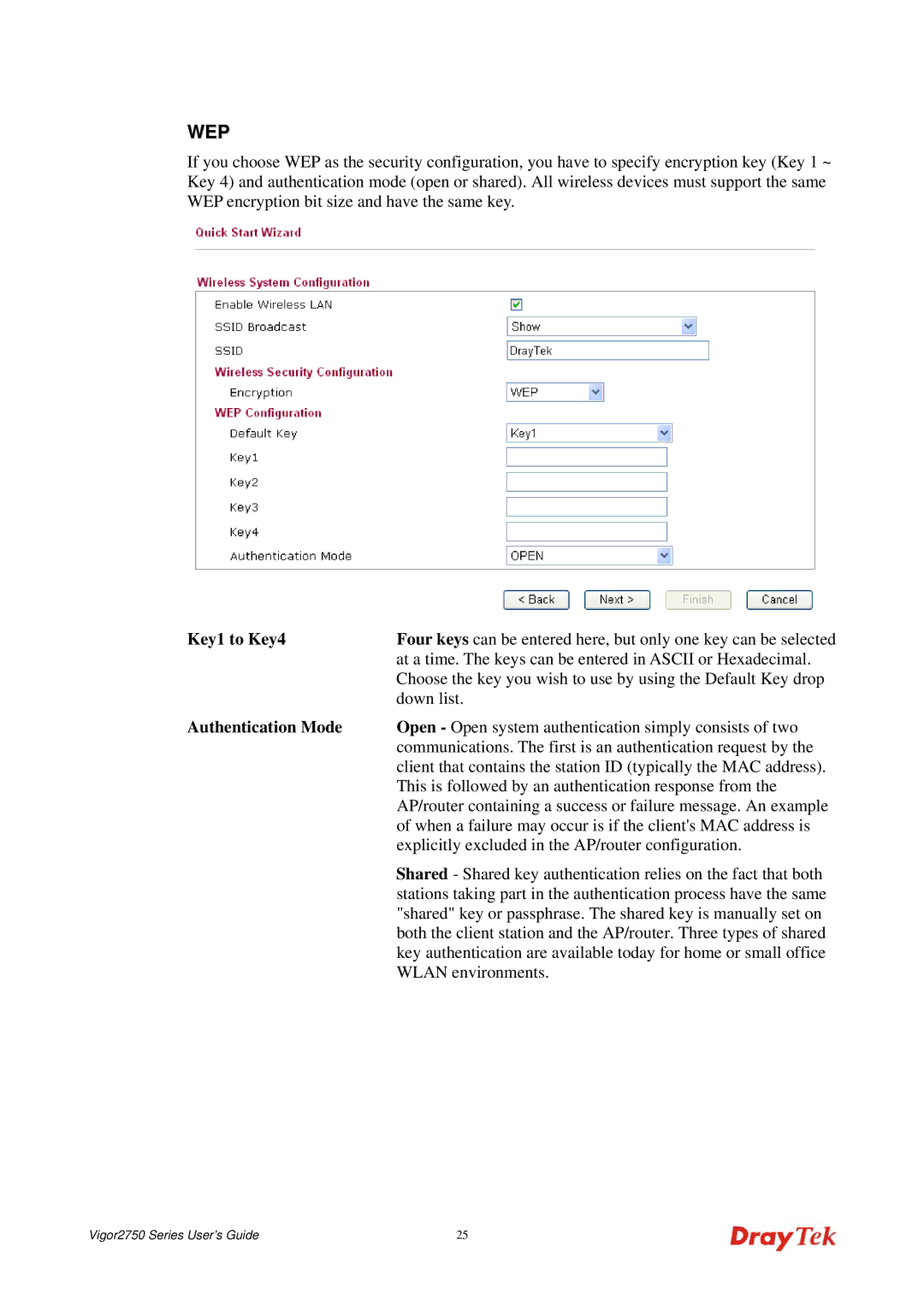
WEP
If you choose WEP as the security configuration, you have to specify encryption key (Key 1 ~ Key 4) and authentication mode (open or shared). All wireless devices must support the same WEP encryption bit size and have the same key.
Key1 to Key4 | Four keys can be entered here, but only one key can be selected |
| at a time. The keys can be entered in ASCII or Hexadecimal. |
| Choose the key you wish to use by using the Default Key drop |
| down list. |
Authentication Mode | Open - Open system authentication simply consists of two |
| communications. The first is an authentication request by the |
| client that contains the station ID (typically the MAC address). |
| This is followed by an authentication response from the |
| AP/router containing a success or failure message. An example |
| of when a failure may occur is if the client's MAC address is |
| explicitly excluded in the AP/router configuration. |
| Shared - Shared key authentication relies on the fact that both |
| stations taking part in the authentication process have the same |
| "shared" key or passphrase. The shared key is manually set on |
| both the client station and the AP/router. Three types of shared |
| key authentication are available today for home or small office |
| WLAN environments. |
Vigor2750 Series User’s Guide | 25 |
